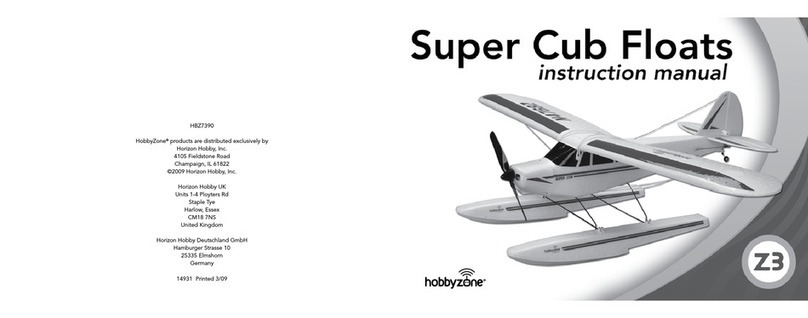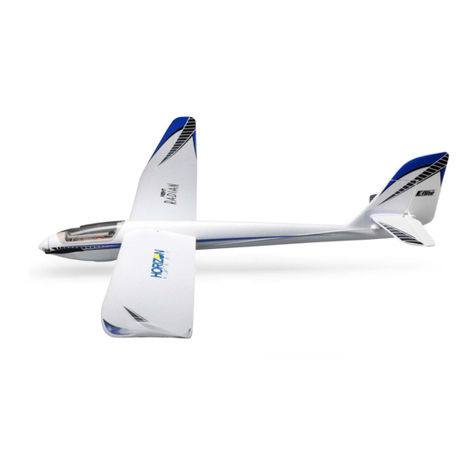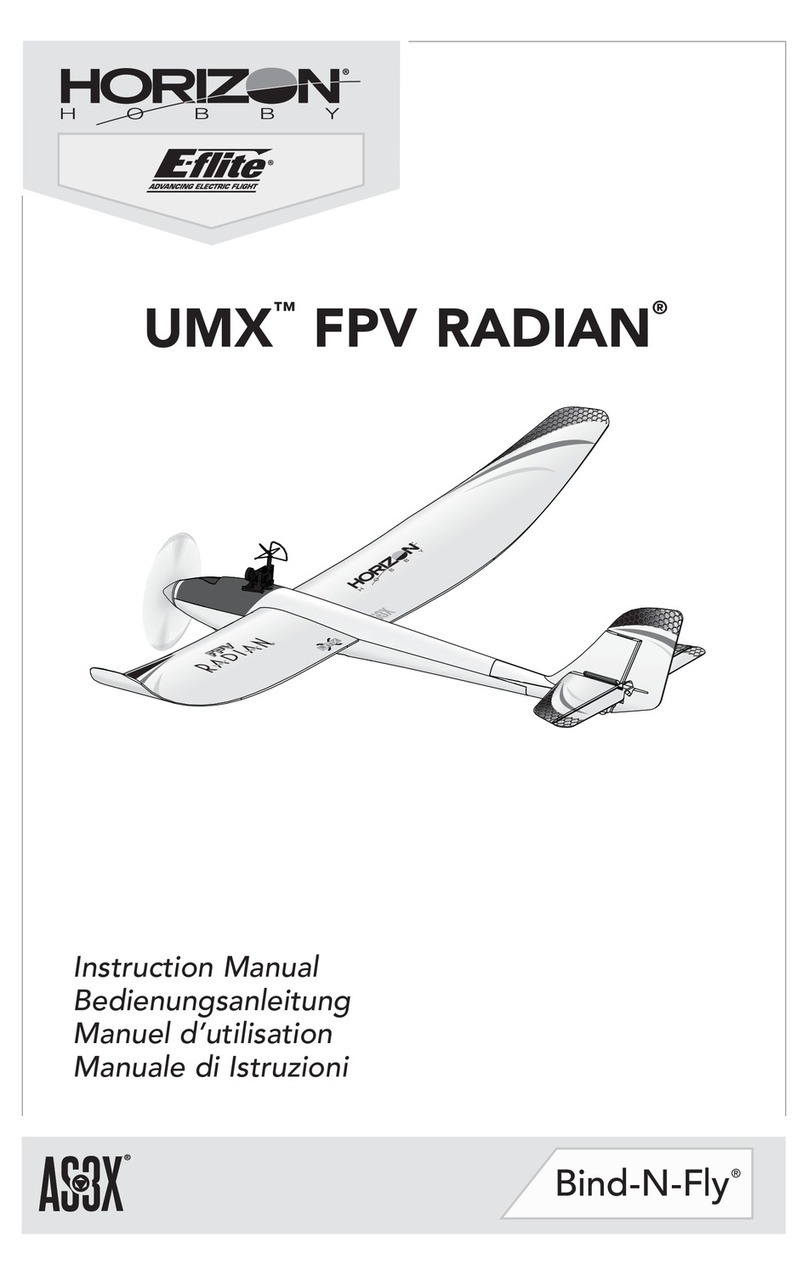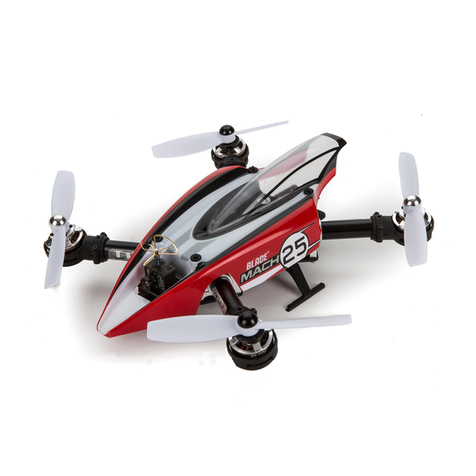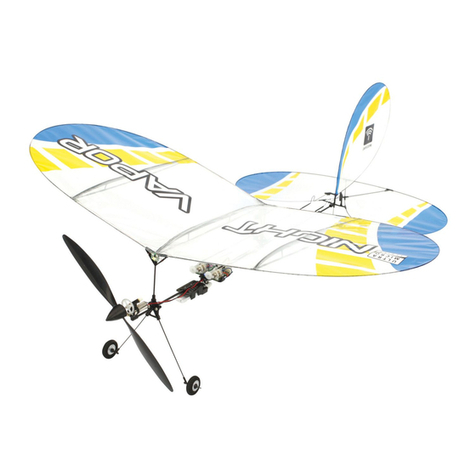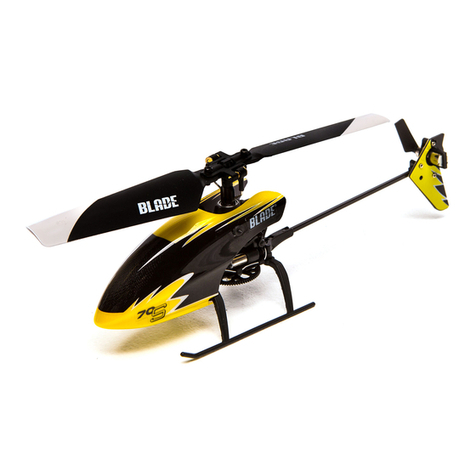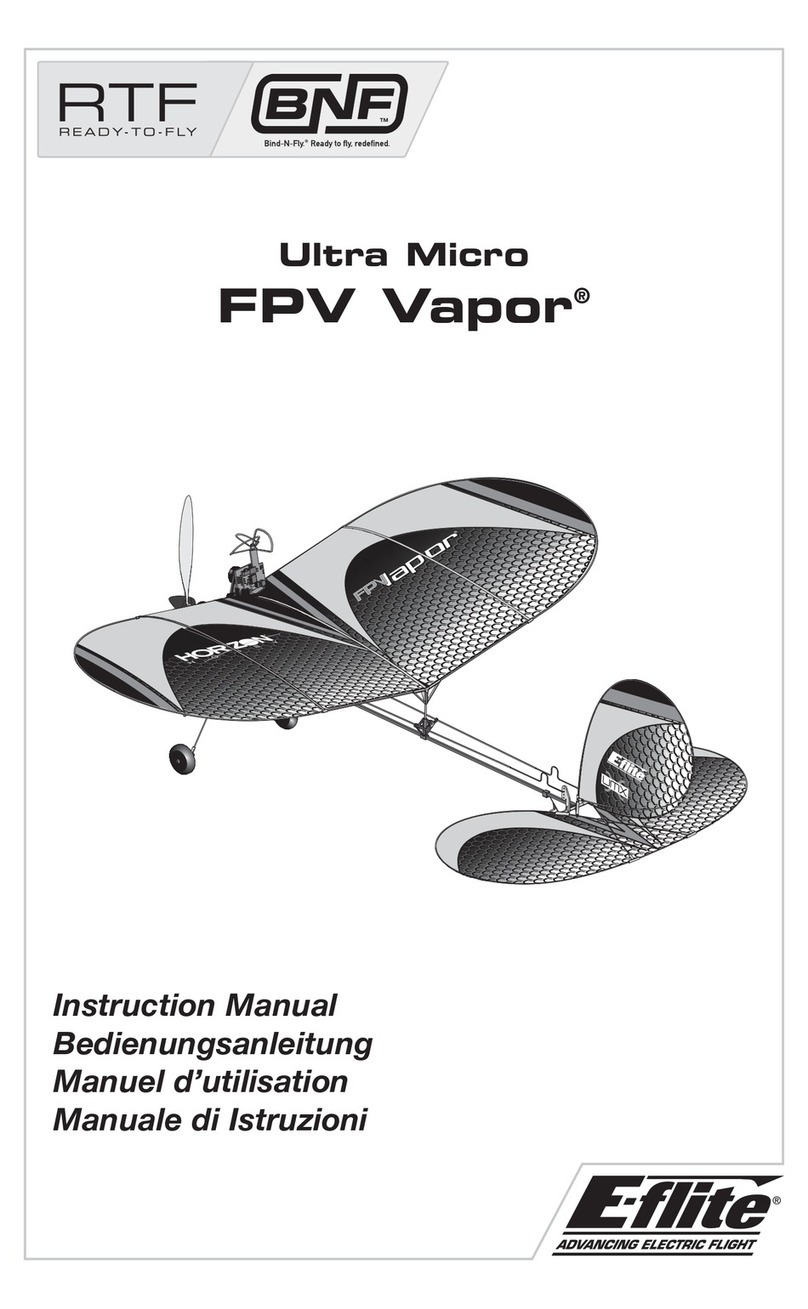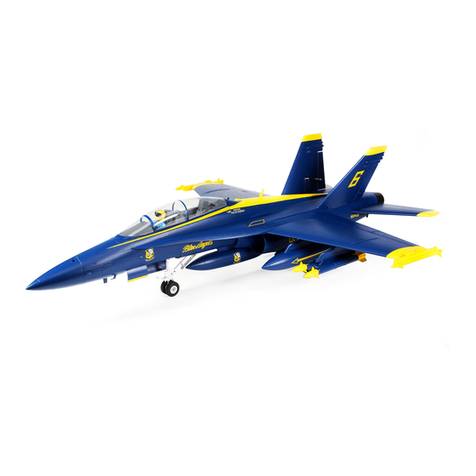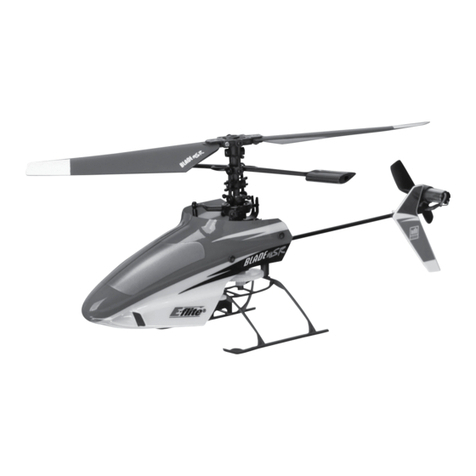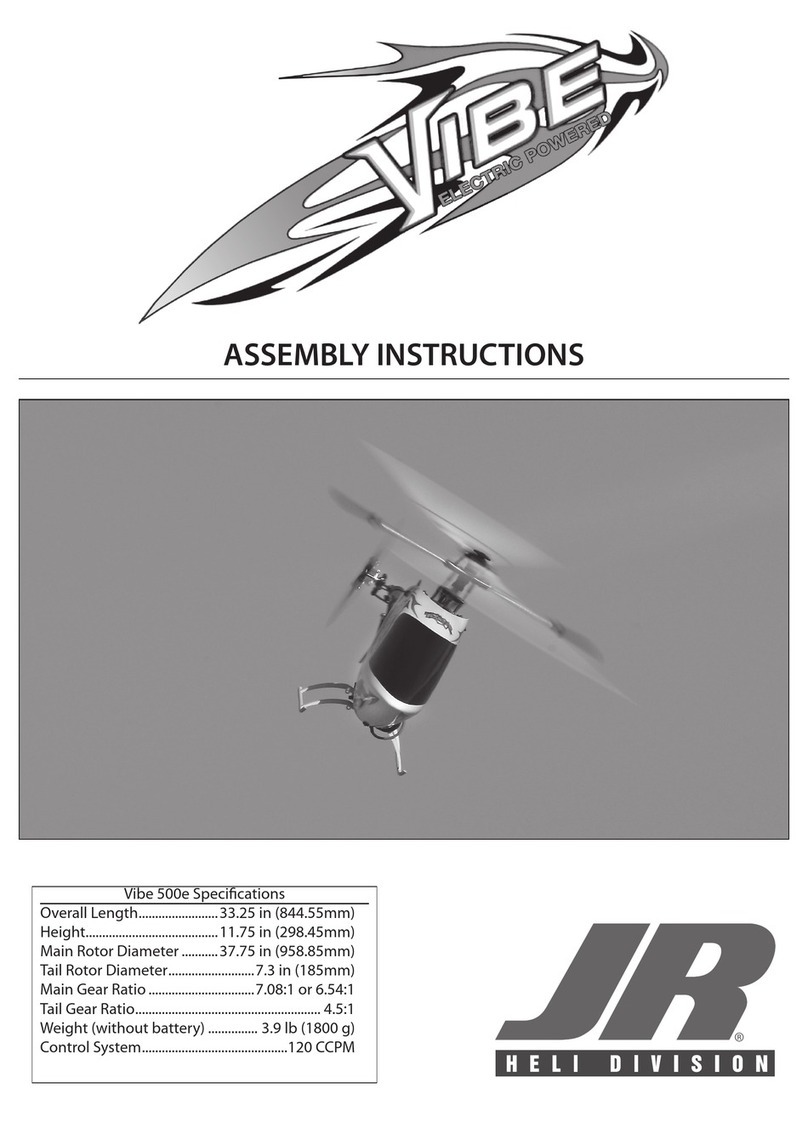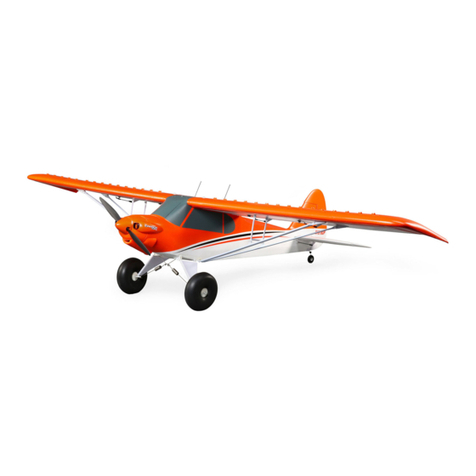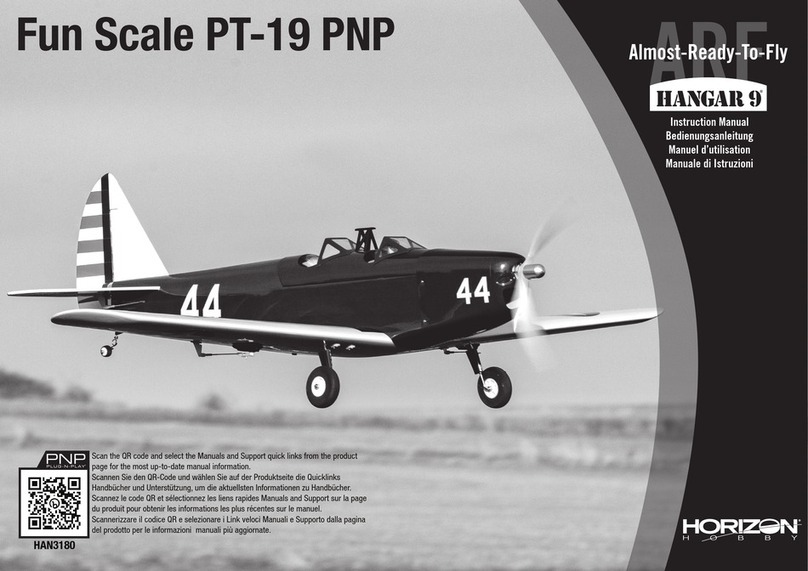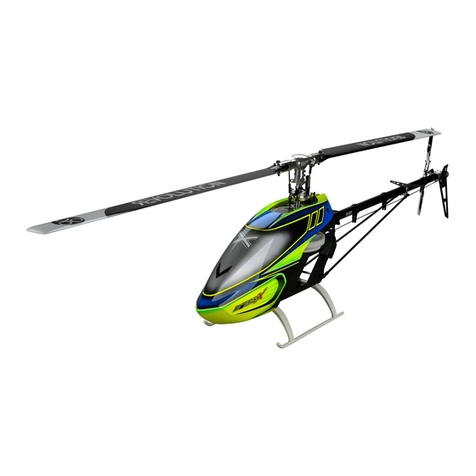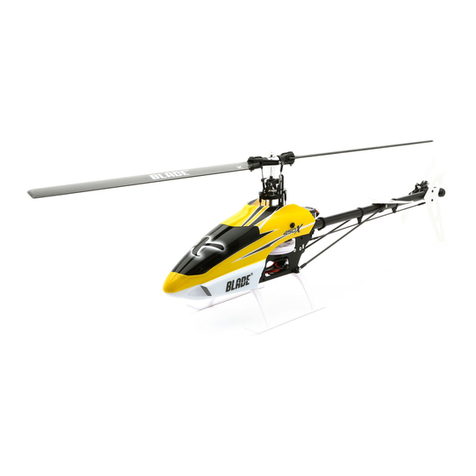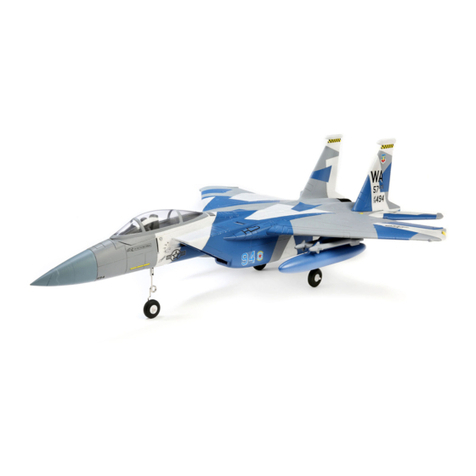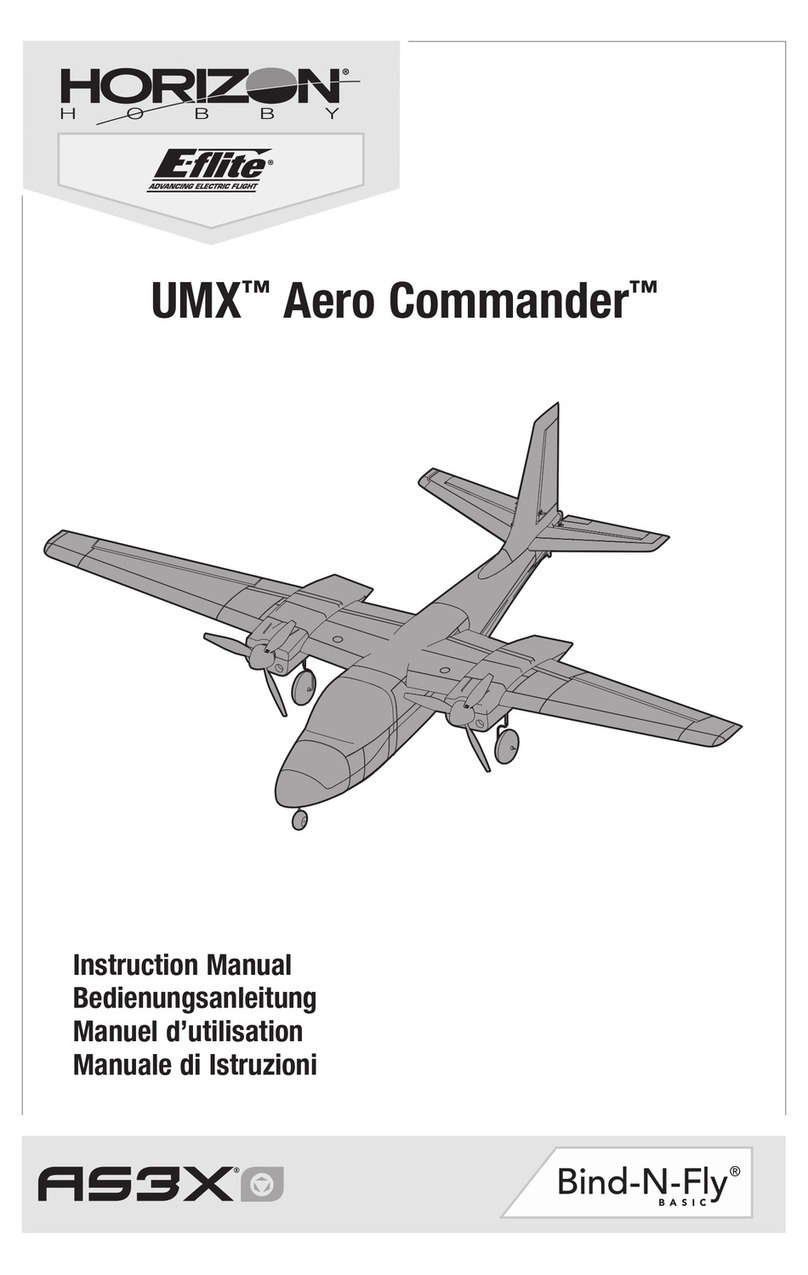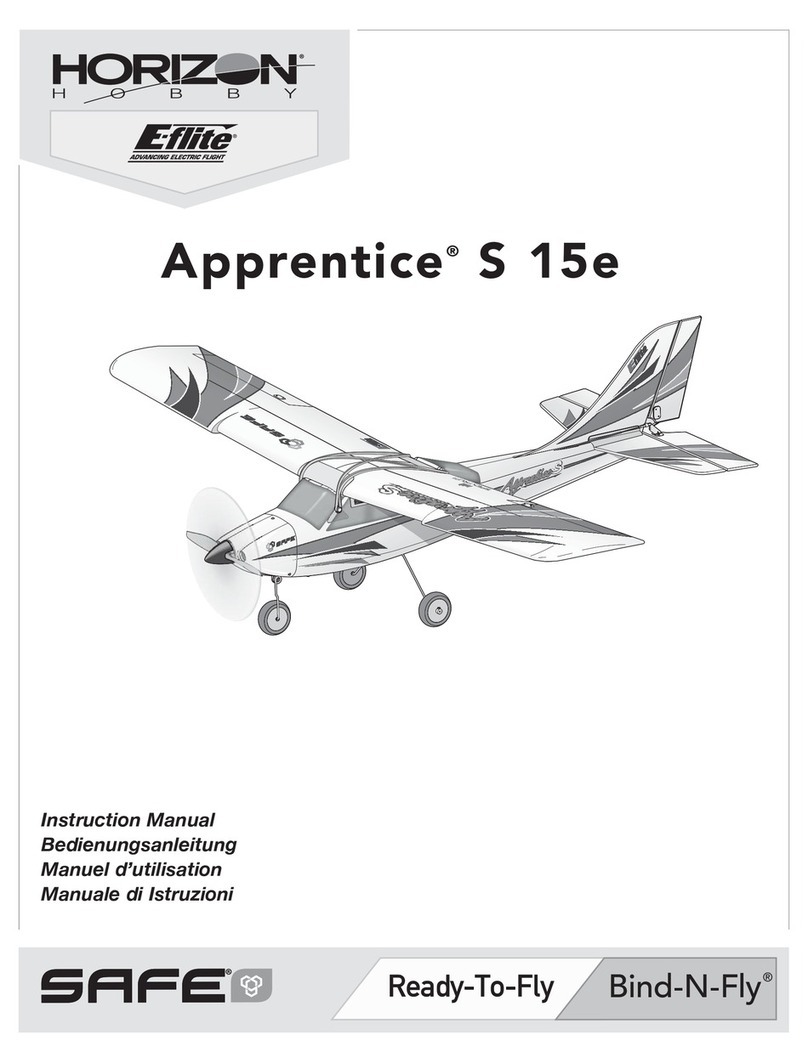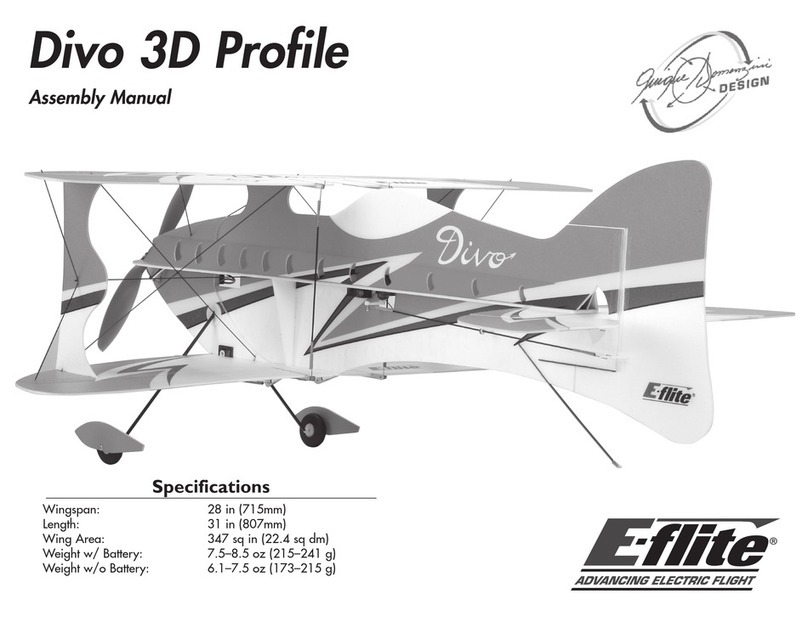
EN
4
Preflight
1. Remove and inspect contents.
2. Read this instruction manual thoroughly.
3. Charge the flight battery.
4. Setup transmitter using transmitter setup chart.
5. Fully assemble the airplane.
6. Install the flight battery in the aircraft (once it has been fully charged).
7. Check the Center of Gravity (CG).
8. Bind the aircraft to your transmitter.
9. Make sure linkages move freely.
10. Perform the Control Direction Test with the transmitter.
11. Perform the stability system control direction test with the aircraft.
12. Adjust flight controls and transmitter.
13. Perform a radio system range test.
14. Find a safe open area to fly.
15. Plan flight for flying field conditions.
NOTICE: Charge only batteries that are cool to the touch and are not damaged.
Look at the battery to make sure it is not damaged e.g., swollen, bent, broken
or punctured.
1. Connect the AC power supply (A) to the charger.
2. Connect the other end of the power supply to an appropriate AC power source.
3. Connect the battery balance lead to the charger adapter (B).
WARNING: Only connect the battery balance lead to the charger
adapter. Never attempt to connect any other type of lead to the charging
adapter or charger port.
4. Connect the charger adapter to the charger (C).
5. Press the Start/Stop Button to begin charging.
6. Battery charging is complete when the charger LED is solid green.
7. Always disconnect the flight battery from the charger immediately upon
completion of charging.
Charging a fully discharged (not over-discharged) 800mAh battery takes
approximately 60 minutes.
CAUTION: Only use chargers specifically designed to charge the
included Li-Po battery. Failure to do so could result in fire, causing injury
or property damage.
CAUTION: Never exceed the recommended charge rate.
LED Indications
Flashing Green LED with power connected but without battery: Standby
Flashing Green LED: Battery connected
Flashing Red LED at varying speeds: Charging
Simultaneously Flashing Red and Green LEDs: Balancing
Solid Green LED: Full Charge
Rapidly Flashing Red and Green LEDs: Error
CAUTION: Once charging is complete, immediately remove the battery.
Never leave a battery connected to the charger.
CAUTION: All instructions and warnings must be followed exactly.
Mishandling of Li-Po batteries can result in a fire, personal injury and/or
property damage.
• NEVER LEAVE CHARGING BATTERIES UNATTENDED.
• NEVER CHARGE BATTERIES OVERNIGHT.
• By handling, charging or using the included Li-Po battery, you assume all risks
associated with lithium batteries.
• If at any time the battery begins to balloon or swell, discontinue use immediately.
If charging or discharging, discontinue and disconnect. Continuing to use, charge
or discharge a battery that is ballooning or swelling can result in fire.
• Always store the battery at room temperature in a dry area for best results.
• Always transport or temporarily store the battery in a temperature range of
40–120º F (5–49° C).
• Do not store battery or model in a car or direct sunlight. If stored in a hot car,
the battery can be damaged or even catch fire.
• Always charge batteries away from flammable materials.
• Always inspect the battery before charging.
• Always disconnect the battery after charging, and let the charger
cool between charges.
• Always constantly monitor the temperature of the battery pack while charging.
• ONLY USE A CHARGER SPECIFICALLY DESIGNED TO CHARGE LI-PO BATTERIES.
Failure to charge the battery with a compatible charger may cause a fire resulting
in personal injury and/or property damage.
• Never discharge Li-Po batteries to below 3V per cell under load.
• Never cover warning labels with hook and loop strips.
• Never charge batteries outside recommended levels.
• Never charge damaged batteries.
• Never attempt to dismantle or alter the charger.
• Never allow minors to charge battery packs.
• Never charge batteries in extremely hot or cold places (recommended between
40–120° F or (5–49° C) or place in direct sunlight.
Charging Warnings
Battery Charging
C
A
B
